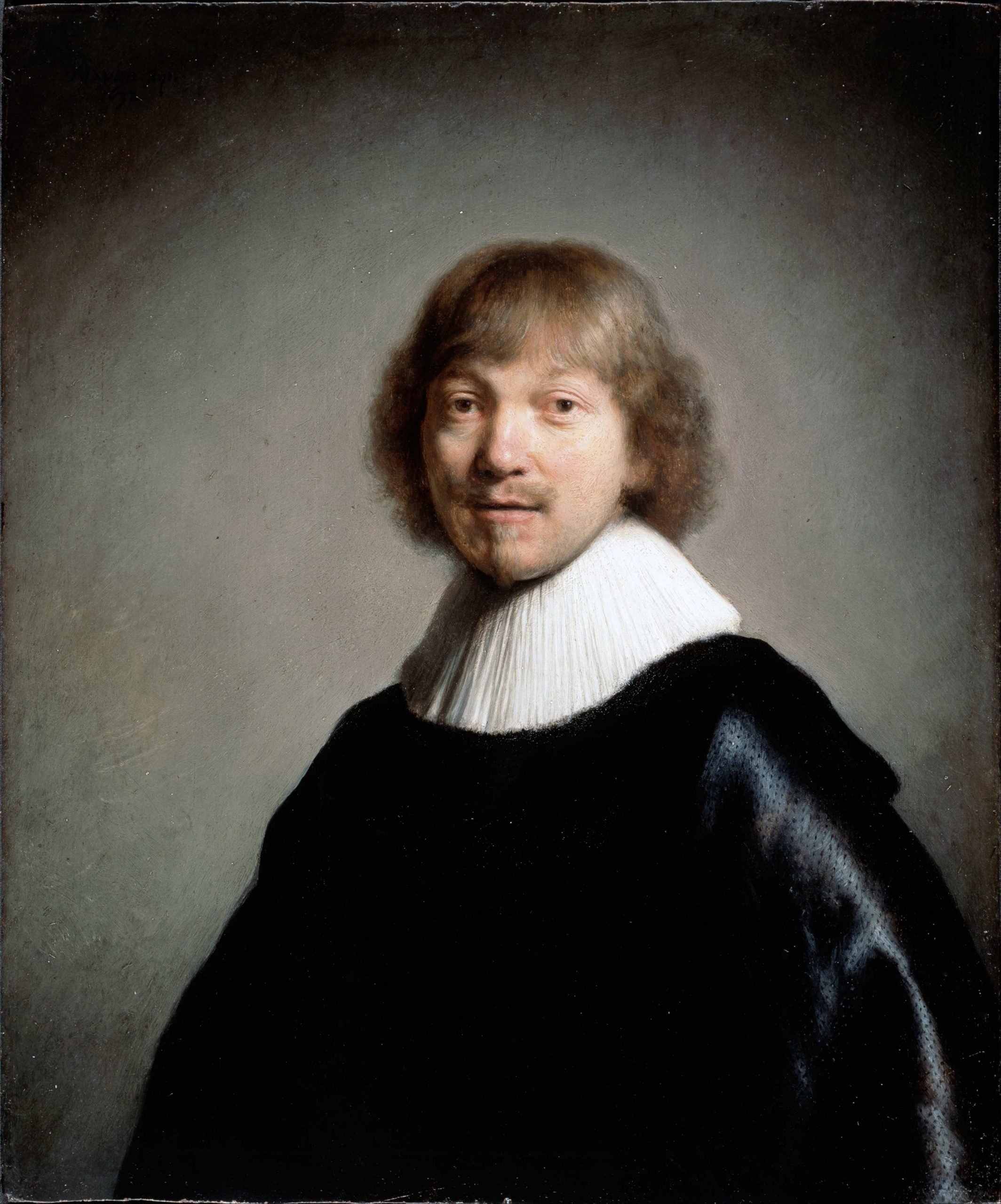
In 2019, Dulwich Picture Gallery, England’s oldest such public institution, nestled in a leafy south London suburb, was the target of a robbery. At midnight, a man broke into the plain brick building and ripped two paintings by Rembrandt van Rijn off the wall. The alarm was triggered, immediately summoning the police, who succeeded in seizing the paintings but not the perpetrator.
In the aftermath, the rapid-response Flying Squad’s lead detective called the raid “audacious” and “well-planned.” More surprising, given the venue and artist involved, was that it had been foiled: Rembrandt paintings had now been stolen eight times from the same museum in 50 years.
Dulwich Picture Gallery, 2011. Photo: Oli Scarff/Getty Images.
Four of these heists targeted a portrait of Jacob de Gheyn III, a 17th-century Utrecht engraver, earning it a spot in the Guinness Book of World Records as the world’s most stolen painting. Inviting as the young man’s face is, size is the key factor. At under 12 by 10 inches, it’s small enough to surreptitiously tuck under one arm, hence the nickname “the takeaway Rembrandt.” (The honor of Rembrandt’s smallest picture, meanwhile, belongs to a portrait of Jaapgen Carels, a plumber’s wife, which measures under 8 by 7 inches.)
The story behind the 1632 portrait is as charming as the expression that greets the viewer. The subject’s childhood best friend was Maurits Huygens, and after touring London and Sweden on art pilgrimages in the 1620s, the two decided to commemorate their friendship through a double portrait.
Rembrandt van Rijn, Maurits Huygens (1632). Public domain, via Wikimedia Commons.
They turned to Amsterdam’s up-and-coming star, Rembrandt, who used the same oak panel and depicted them brightly spotlit and standing shoulder-to-shoulder. Both agreed that whoever died first would bequeath their portrait to the other, a love locket of sorts for Dutch aristocrats. The paintings remained together until the 18th century. Huygens is now in Hamburg’s Kunsthalle and De Gheyn arrived at the Dulwich Picture Gallery in 1811 as part of its founding bequest by Francis Bourgeois.
After remaining undisturbed among the gallery’s esteemed Old Master painting collection for a century and a half, the portrait was stolen—along with seven others, including two Rembrandts—in 1966. On New Year’s Eve, thieves entered after removing a panel of a seldom-used door. Owning to the size of their entrance, they were restricted to stealing smaller works. Still, the group of paintings was worth £3 million (roughly $90 million today). Police made short work of the case, recovering the paintings (courtesy of a dog walker) and arresting an off-duty ambulance driver, who was sentenced to five years in prison.
The Dulwich Picture Gallery after the 1966 theft of three Rembrandts, three Rubens, and a Gerrard Dou. Photo: PA Images via Getty Images.
The second time was brazen and straightforward. The gallery hadn’t upgraded its security (the paintings were neither alarmed nor fixed to the wall) and so one day in 1973 a 24-year-old popped the portrait in a plastic bag and rode off with it in his bike basket. The man was swiftly detained by police and the painting was returned.
The third theft was remarkably similar, though its conclusion was considerably more drawn out. In 1981, two men entered the gallery. While one of them distracted the staff, the other unhooked the painting from the wall and carried it away under an overcoat. A fortnight later, Giles Waterfield, the gallery’s director, received a telephone call from a German businessman offering to broker a deal. The sting operation that followed involved undercover agents, corny pseudonyms, forged bank drafts, and trips to Amsterdam. Within a month, the portrait was back with the gallery.
Following the escapade, the gallery thoroughly upgraded its security system, but even that didn’t prevent De Gheyn’s fourth disappearance. In 1983, thieves scaled a ladder, smashed a skylight, dropped into the gallery, and prized away the artwork. The alarm system worked, and the police arrived inside five minutes. Unfortunately, the thieves had already escaped. The case went cold until late 1986, when police received a tip that the painting was in the left-luggage office of a train station in Muenster, Germany.
“The temptation is to lock the wretched thing away and put up a color photograph,” Waterfield said in the wake of its return. But despite that understandable wish, the portrait of the quizzical young man, who seems on the cusp of speaking, still hangs in gallery five of the London institution.
What’s the deal with Leonardo’s harpsichord-viola? Why were Impressionists obsessed with the color purple? Art Bites brings you a surprising fact, lesser-known anecdote, or curious event from art history.